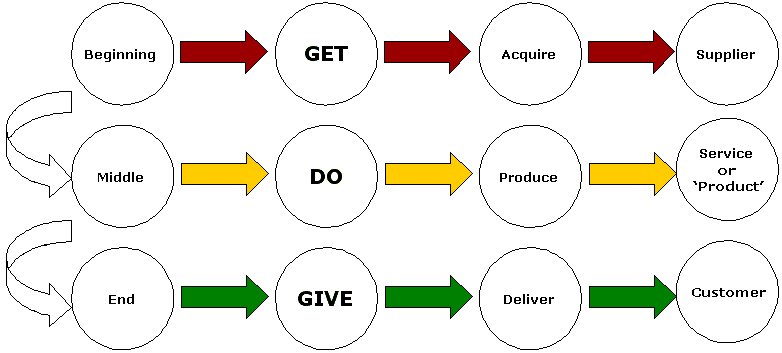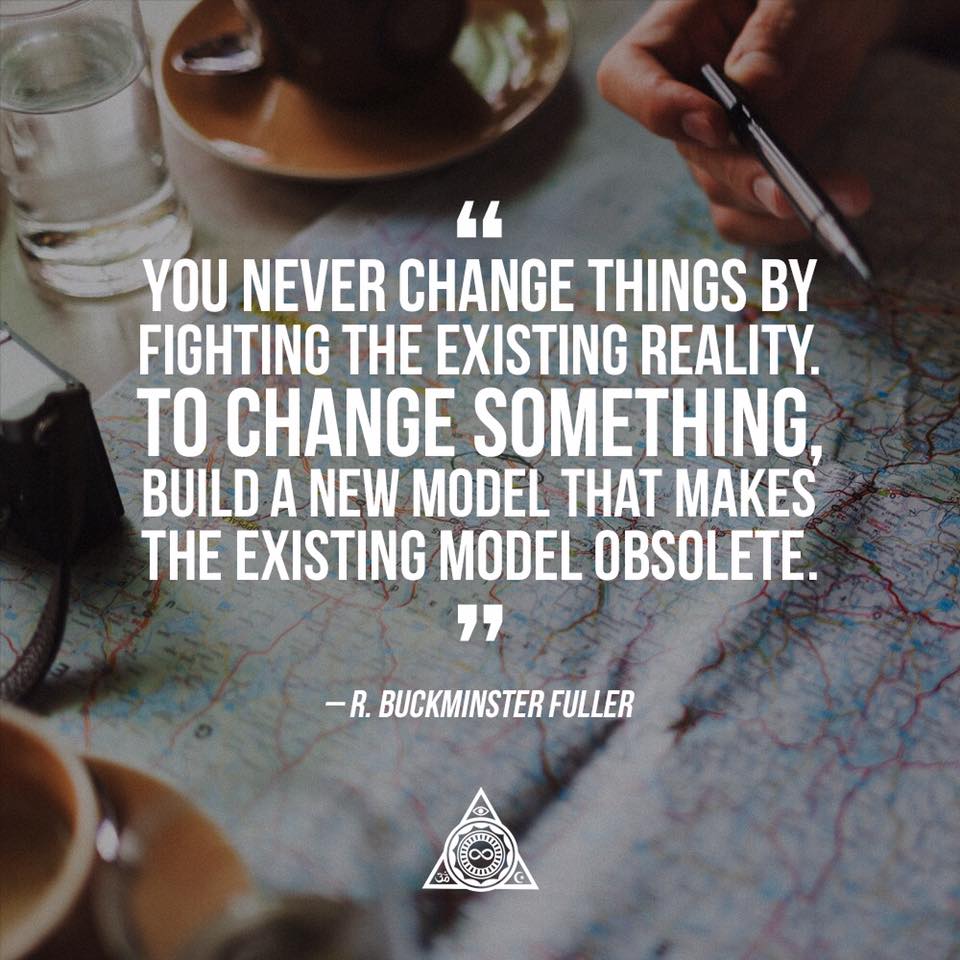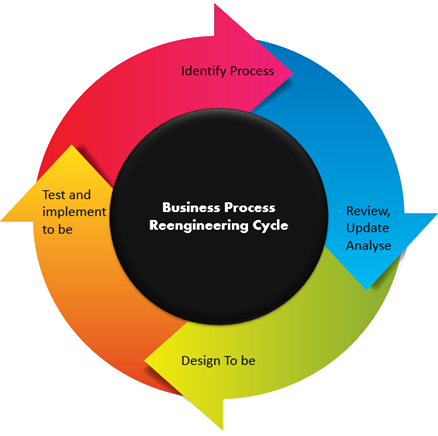MCTS Services
We're NOT from Corporate, but yes, we are here to help...

Communication is essential for assuring profitable action through timely response. The ability to communicate is vital for people to succeed individually and collectively. The integrity of a system comes from its reliability. Any business management system, aside from the logic it uses to manage or plan events, must be a system that builds trust. A business management system is a communication system for people. People must believe in and use the system if it is to be a profitable tool.
Without good, clear, effective, and timely communication as to the demands of the marketplace, and the ability of any one of the business entities in a company to respond, a company can only hope for good luck, patient customers, and understanding employees.
Reengineer Your Systems:
In simple terms, our approach is to (1) help you re-engineer your
internal systems quickly; (2) inspire and train your employees to
fully embrace any new system; and (3) assure full participation and
creative involvement of every team member or employee using performance
measures and incentives.
 We Make Sure Your Systems
Work: We use our expertise in management systems to
help you implement
strategic changes in your operating systems. We have no agenda to
"sell" you the perfect system. You decide what best suits your company
needs; we make sure it works. We create the necessary linkage that
assures full accountability.
We Make Sure Your Systems
Work: We use our expertise in management systems to
help you implement
strategic changes in your operating systems. We have no agenda to
"sell" you the perfect system. You decide what best suits your company
needs; we make sure it works. We create the necessary linkage that
assures full accountability.
Maintaining Clear Vision:
Use of the Employee
Self-Management system will
allow everyone in your company to begin resolving any-and-all points
of conflict. Employee Self-Management is a tool to focus on
what is wrong with the system,
helping employees give up looking for
who is to blame. The "blame-game" is a habit. It is a "resistance"
that we addressed earlier. When we examine the resistance of blame,
we can see that jumping to blame someone is in reality a
desire for action to change
the problem. Unfortunately it is an action that often creates or
perpetuates the problem.
Work-Flow Mapping: One of the most common problems of
shared work environments is the misperception that everyone knows
how the work of various teams is done. This is seldom so. The tools
provided by Employee Self-Management allow everyone to easily map
their workflow. We suggest flow-charts, as they are easy to produce
and easy to read. If you can do your job, you can also make a map
that shows others how you do what you do. When you are able to map
your daily work patterns for co-workers, it becomes much easier for
them to see how your work depends on theirs. When all related employees
bring their maps to a team meeting, the intersecting points are obvious,
and potential problems are addressed before the work is in process.
 Flow-Charting Your Processes: Flow-charts that describe
your teams, team assignments, scheduling and planning requirements,
and examples of work-flow methods help everyone understand how the
cause and effect of one's actions impact another's job. Developing
these flow-charts for one's assignments provides a way to communicate
and get agreement about what most needs to be done, and how to best
do the work. This brings us to the last principle of the Employee
Self-Management triad:
Flow-Charting Your Processes: Flow-charts that describe
your teams, team assignments, scheduling and planning requirements,
and examples of work-flow methods help everyone understand how the
cause and effect of one's actions impact another's job. Developing
these flow-charts for one's assignments provides a way to communicate
and get agreement about what most needs to be done, and how to best
do the work. This brings us to the last principle of the Employee
Self-Management triad:
Self-determination, and Interdependence
are the foundation
for highly successful teams.
Building Community: It is our belief that everyone wants
to be a valued and valuable member of a thriving work environment.
Our methods allow this involvement to emerge in your company in
ways that are fair, equitable, economically sound, and personally
rewarding.
 Eliminating Vagueness: Employee
Self-Management helps you
to eliminate vagueness
Eliminating Vagueness: Employee
Self-Management helps you
to eliminate vagueness
-
1. In your communication systems;
2. In your accountability systems; and
3. In your performance evaluation systems.
Vagueness costs you
money through unprofitable action. Vagueness lowers productivity,
quality, and morale. By eliminating vagueness in your systems, employees
come to understand the difference between "jargon" and teamwork.
The alternative to independence, self-determination, and interdependence
is "policing" the work-group or team. People who are "policed" often
retreat by using vagueness as a strategy to avoid blame or attack,
and the cycle of wasted action continues.
Without an operating system that establishes clear self-management
guidelines for independence, self-determination, and interdependence
of the individual, the true gains of a team approach cannot be fully
realized. We believe that withoutEmployee Self-Management, you are in fact, paying your people to be ineffective.
MCTS guides you through the development of "peopleware" management systems to facilitate achievement of your company's strategic directives. "Peopleware" is a term we use to describe the skills needed to successfully integrate information technology into the human work environment.
"Peopleware" is a much neglected but crucial factor for success in
business today. Business now has access to the finest hardware, software,
and technical support ever developed, yet due to "peopleware" problems,
these technologically advanced systems often deliver less than optimal
results.
 We Introduce New Systems:
There are many tools now available that can be used as objective planning/reporting
systems that take the discussion of "Best" out of the old opinion-based
observation method and established clear objective measures. For this
change to clear objective measures to be realized, everyone must be
willing to re-evaluate their views on what is "best" for the company.
We Introduce New Systems:
There are many tools now available that can be used as objective planning/reporting
systems that take the discussion of "Best" out of the old opinion-based
observation method and established clear objective measures. For this
change to clear objective measures to be realized, everyone must be
willing to re-evaluate their views on what is "best" for the company.
Properly structured work relationships will greatly reduce employee
turnover. The chance for individual success and therefore company
or team success is greatly increased by the advantages of clear objective
measures.
By re-designing your company's internal system of operations, the
groundwork will be in place for what comes next. Again, for this ground
work to be of use, there must be shared vision and agreement as to
what the system is, how it works, and who is responsible for each
action.
Whenever and wherever the employee can be actively engaged, in stages
of design as well as implementation, the result will be greater commitment
to the new system. This will mean smoother transitions, less unproductive
"down-time" and more employee participation guaranteeing full integration
and utilization of new systems.
 Where Innovation Matters
Where Innovation Matters